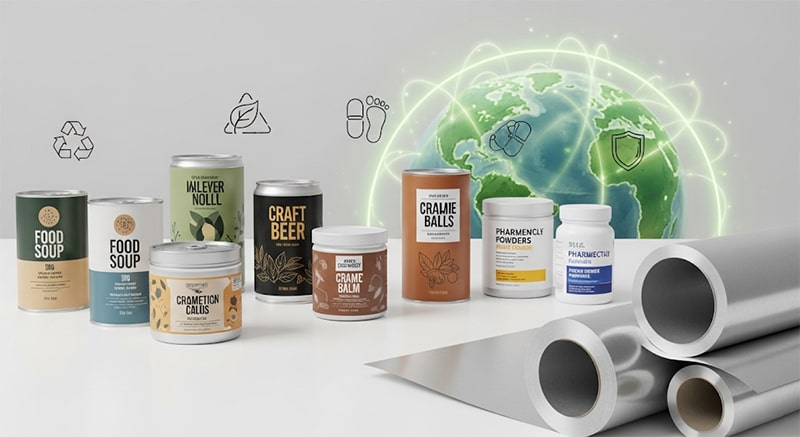
The 13th International Tinplate Conference, organized by the International Tin Association, took place on September 9–10, 2025 at the Tara Copthorne Hotel in London. The two-day event brought together tinplate producers, canmakers, coating specialists, steelmakers, and packaging innovators to discuss the latest market trends, sustainability challenges, and technical breakthroughs.

Industry experts opened the conference with a deep dive into tinplate’s global market dynamics:
Tom Langston of the International Tin Association provided an overview of global tin supply and pricing.
Davide Padovani (Steelforce Packaging) emphasized how trade rules and tariff changes are reshaping supply chains.
Laetitia Durafour (Sonoco) analyzed shifting consumer packaging trends, including premium branding and sustainable formats.
Mo Zhiying from Shougang Jingtang highlighted China’s growing role and shared insights into quality-driven manufacturing practices.
Technical sessions showcased innovation across forming, coating, and digitalization:
Thomas Lieber (Fraunhofer Institute) presented advanced material modeling to simulate the forming of high-strength steels.
Quaker Houghton’s team (Craig Clease and Jasper Brugman) outlined the evolution of high-speed tinning lines.
Damian Levin (Ternium Argentina) demonstrated how AI chatbots can help identify and prevent defects in production lines.
Sustainability dominated the first day’s discussions:
Samantha Munro (International Tin Association) spoke on responsible sourcing within the tin supply chain.
Ulrich Nehring (Nehring Consultants) provided an overview of regulatory compliance and food contact safety testing.
Steve Claus and Richard Lézé (SfPE) explained Europe’s latest recycling legislation for steel packaging.
The second day focused on breakthroughs in tinplate processing and policy-driven innovation:
Stefano Martines (Tenova) unveiled next-generation electrolytic tinning line processes.
Ruaidri MacDomhnaill (SfPE) discussed how new EU regulations could accelerate packaging design innovation.
Carlo Mappelli addressed electric arc furnace recycling routes for tinplate, linking them with upcoming EU circular economy frameworks.
The final sessions explored chromium-free coatings (Sherwin-Williams and SSC IA) and a forward-looking panel debate with representatives from Tata Steel, ArcelorMittal, Trivium, Sonoco, Can Corporation of America, and CANPACK.

| Session | Theme | Highlighted Speakers | Focus Area |
|---|---|---|---|
| 1 | Market Trends | Tom Langston, Davide Padovani, Laetitia Durafour, Mo Zhiying | Global trade, tariffs, consumer packaging, China’s market |
| 2 | Technologies | Thomas Lieber, Quaker Houghton, Damian Levin | High-strength steels, tinning line performance, AI defect detection |
| 3 | Sustainability | Samantha Munro, Ulrich Nehring, SfPE team | Responsible sourcing, food safety, EU recycling rules |
| 4 | Innovations | Stefano Martines, Ruaidri MacDomhnaill, Carlo Mappelli | Tinning line upgrades, EU policy, EAF recycling |
| 5 | Coatings | Sherwin-Williams, SSC IA | Chromium-free passivation, food contact safety |
| 6 | Future Panel | Tata Steel, ArcelorMittal, Trivium, Sonoco, CANPACK | Industry challenges, opportunities, brand perspectives |
From the standpoint of a tinplate manufacturer, the 2025 conference underscored two realities. First, innovation is no longer optional: whether through AI-driven defect detection or Cr-free coatings, manufacturers must adapt to stricter regulations and consumer demand for safety. Second, collaboration across the supply chain—from steel producers to brand owners—is becoming the true competitive advantage. For suppliers in Asia, Europe, and the Americas, the conference offered not only knowledge, but also partnerships that can accelerate the shift toward sustainable, high-performance tinplate packaging.
The 13th International Tinplate Conference reaffirmed tinplate’s position as a critical packaging material at the intersection of sustainability, safety, and innovation. With new EU regulations on the horizon and global trade shifting, industry stakeholders are aligning to ensure that tinplate remains recyclable, efficient, and future-proof.
Are you exploring custom tinplate packaging solutions that meet new sustainability standards? Connect with us today to learn how next-generation tinplate can elevate your brand while protecting the planet.